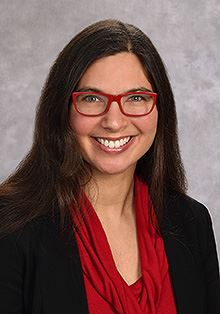231-240 of 1861 Results Found
Condition
Urinary Incontinence (Enuresis) in Children What is enuresis in children? Urinary incontinence (enuresis) is the loss of bladder control. In children younger than age 3, it’s normal to not have full bladder control. As children get older, they become more able to control their
Condition
Neurogenic Bladder in Children What is neurogenic bladder in children? Neurogenic bladder means the bladder doesn’t work normally because of nerve damage. It causes a child to have problems with holding or releasing urine. The muscles and nerves of the urinary system work
Condition
Peyronie Disease What is Peyronie disease? Peyronie disease causes hard, flat plaque to form under the skin on the tissue of the penis. The plaque often starts as an inflammation that may turn into scar tissue. The plaque builds up inside the penis in the thick elastic membrane
Condition
Syncope in Children What is syncope in children? Syncope is a brief loss of consciousness and muscle tone (or posture) that can occur when not enough blood gets to the brain. Syncope is commonly called fainting. In most children, it’s usually harmless. But in a few children
Condition
Tetralogy of Fallot (TOF) What is tetralogy of Fallot? Tetralogy of Fallot (TOF) is a set of 4 congenital heart defects that happen together. Tetralogy refers to the number 4. Congenital means that a baby is born with them. The set of 4 defects are: Narrowing (stenosis) of the
Condition
Hypoglycemia in Children What is hypoglycemia in children? Hypoglycemia is when the level of sugar (glucose) in the blood is too low. Glucose is the main source of fuel for the brain and the body. The normal range of blood glucose is about 70 to 140 milligrams per deciliter (mg
Condition
Encephalitis in Children What is encephalitis in children? Encephalitis is inflammation of the brain. The inflammation causes the brain to swell. This leads to changes in a child's nervous system that can include confusion, changes in alertness, and seizures. Meningitis often
Resources & Accomplishments
Our Patient and Family Advisory Councils as well as our Patient/ Parent Workgroups collaborate as a team to promote positive change throughout the Phoenix Children’s network. Here are some of our recent notable accomplishments: Family Community Resource Guides Our PFACs and PPWGs

Condition
Poison Ivy, Oak, and Sumac Rash What is poison ivy, oak, and sumac rash? Poison ivy, poison oak, and poison sumac are types of American plants. They each grow in different parts of the country. The plants cause allergic contact dermatitis in most people who touch them. The rash
